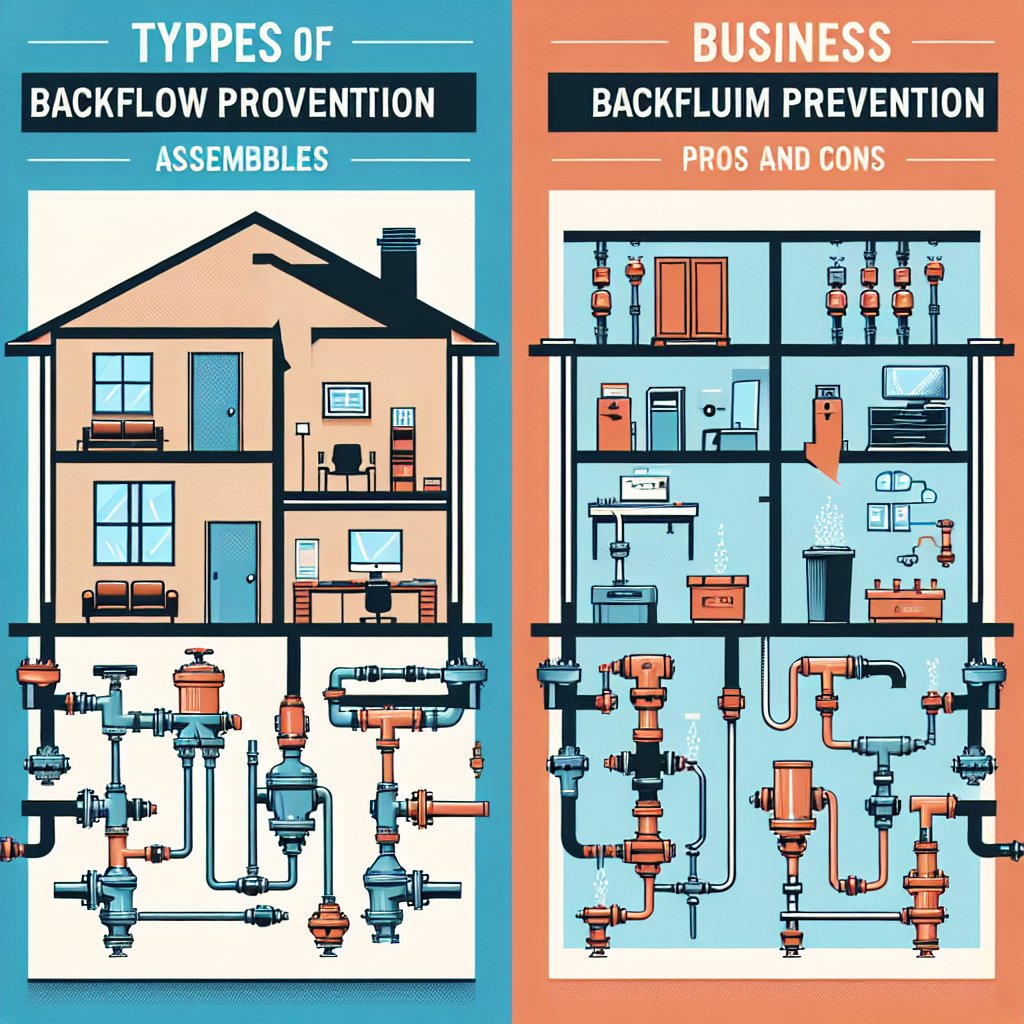Backflow prevention is a crucial aspect of plumbing that ensures clean drinking water remains uncontaminated by potentially harmful substances. Whether you are a homeowner or a business owner, understanding the different types of backflow prevention assemblies can help you make informed decisions about your water safety. This article explores various backflow prevention devices, their advantages and disadvantages, and how they can benefit your property.
What is Backflow Prevention?
Backflow prevention involves the use of devices designed to stop the reverse flow of water, which can occur due to changes in pressure. These devices help protect potable water systems from contamination by preventing non-potable water from flowing back into the drinking water supply.
Types of Backflow Prevention Assemblies
1. Air Gap
An air gap is the simplest and most effective type of backflow prevention. It involves a physical separation between the end of a pipe and the flood level of a fixture, creating a gap that prevents backflow.
Pros:
- Simplicity: No moving parts mean less maintenance and fewer chances for failure.
- Effectiveness: Air gaps provide the highest level of protection against contamination.
- Cost-effective: Typically low installation costs.
Cons:
- Space Requirement: Requires installation space above the fixture, which may not suit all locations.
- Not Suitable for All Applications: Limited use in certain systems where maintaining an air gap is impractical.
2. Double Check Valve Assembly (DCVA)
A DCVA consists of two check valves that ensure water flows in one direction. If one valve fails, the second valve provides an additional layer of protection.
Pros:
- Reliability: Redundant protection reduces the risk of backflow.
- Versatility: Suitable for low to moderate hazard situations, making it widely applicable.
Cons:
- Maintenance Needs: Regular testing and maintenance are required to keep the system functioning properly.
- Potential for Failure: If not maintained, both valves can fail, risking contamination.
3. Reduced Pressure Zone Device (RPZD)
The RPZD is a sophisticated backflow prevention assembly designed for high-hazard situations. It features a pressure differential that will prevent backflow even under varying pressure conditions.
Pros:
- High Protection Level: Ideal for areas at risk of severe contamination, offering maximum safety.
- Continuous Operation: Can handle fluctuations in pressure without failing.
Cons:
- Complexity: More complicated than other systems, requiring professional installation.
- Cost: Higher initial investment and maintenance costs compared to simpler systems.
4. Pressure Vacuum Breaker (PVB)
A PVB is installed above the highest water outlet and prevents backflow by breaking the vacuum created when water is siphoned back due to pressure changes.
Pros:
- Effectiveness: Great for irrigation systems and non-potable applications.
- Easy Installation: Can be installed relatively easily by a plumber.
Cons:
- Limited Application: Not suitable for high-hazard scenarios, as it only provides adequate protection under specific conditions.
- Maintenance: Regular testing is essential to maintain functionality.
Choosing the Right Assembly for Your Needs
When it comes to selecting a backflow prevention assembly, consider the specific needs of your household or business operation.
Homeowners: Prioritize Simplicity and Cost
For most homeowners, especially those with simple plumbing systems, an air gap might be the most suitable option. If your home includes lawn irrigation systems or pools, consider a reduced pressure zone device to ensure safety.
Businesses: Focus on Compliance and Safety
For businesses, especially those in industries handling potentially hazardous materials, investing in robust backflow prevention like the RPZD is crucial. Compliance with local regulations often requires the installation of specific devices based on the potential risks involved in the business’s activities.
Conclusion
Understanding the types of backflow prevention assemblies is vital for both homeowners and businesses to ensure clean, safe water. While each type offers unique pros and cons, the right choice ultimately depends on your specific needs, budget, and local regulations. By being informed and proactive, you can protect your property and ensure a safe water supply for generations to come.
Remember, regular maintenance and testing of your backflow prevention device are as important as the initial installation. Whether you opt for the simplicity of an air gap or the advanced protection of an RPZD, prioritize both safety and functionality. Your health depends on it.


